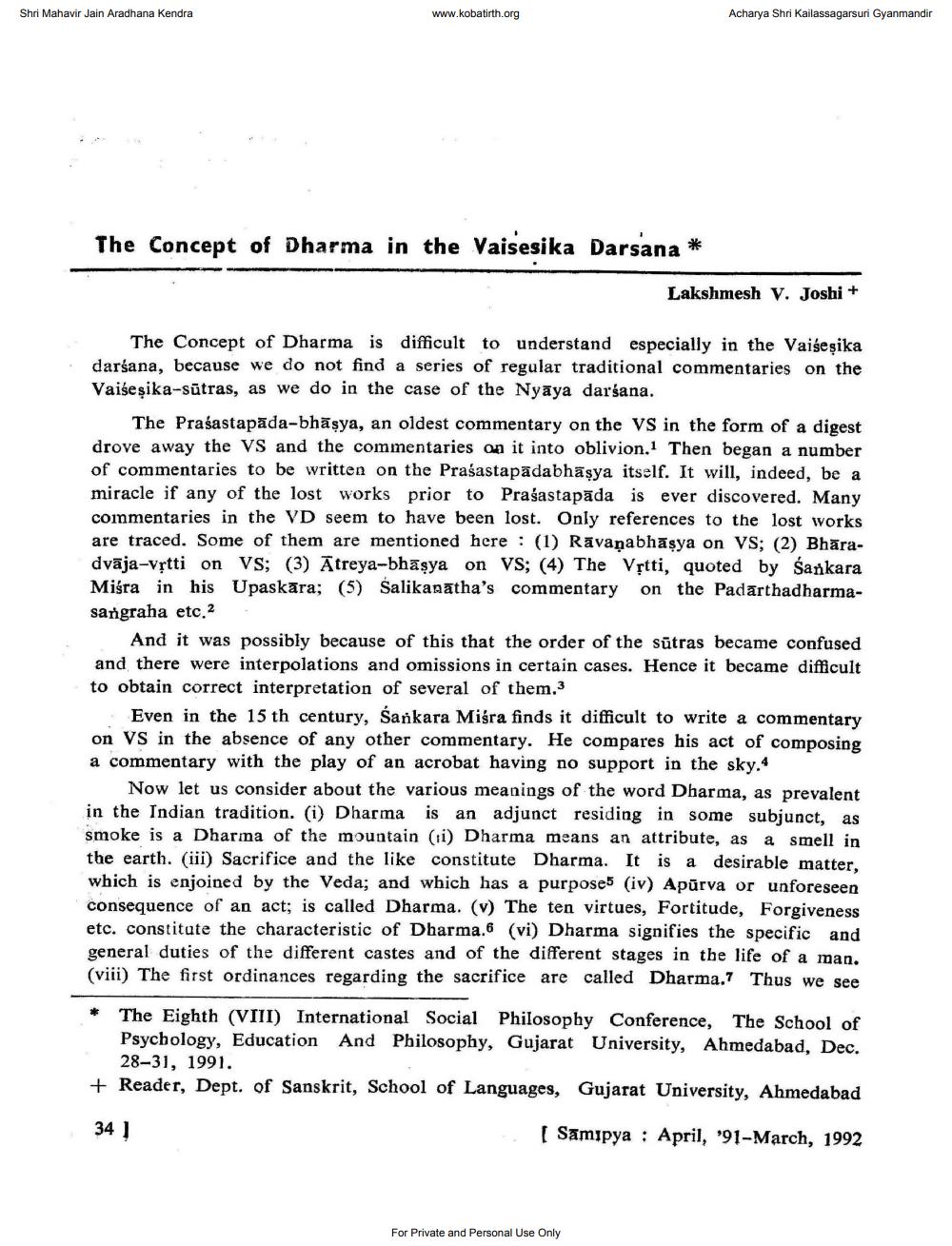________________
Shri Mahavir Jain Aradhana Kendra
www.kobatirth.org
Acharya Shri Kailassagarsuri Gyanmandir
The Concept of Dharma in the Vaisesika Darsana *
Lakshmesh V. Joshi +
The Concept of Dharma is difficult to understand especially in the Vaiseşika darśana, because we do not find a series of regular traditional commentaries on the Vaišeşika-sūtras, as we do in the case of the Nyāya darśana.
The Prasastapāda-bhāsya, an oldest commentary on the VS in the form of a digest drove away the VS and the commentaries on it into oblivion. Then began a number of commentaries to be written on the Prasastapādabhāşya itself. It will, indeed, be a miracle if any of the lost works prior to Prasastapāda is ever discovered. Many commentaries in the VD seem to have been lost. Only references to the lost works are traced. Some of them are mentioned here: (1) Rāvaṇabhāşya on VS; (2) Bhāradvāja-Vrtti on VS; (3) Ātreya-bhāşya on VS; (4) The Vștti, quoted by Sankara Misra in his Upaskāra; (5) Salikanātha's commentary on the Padārthadharmasangraha etc.2
And it was possibly because of this that the order of the sūtras became confused and there were interpolations and omissions in certain cases. Hence it became difficult to obtain correct interpretation of several of them.3
Even in the 15th century, Sankara Miśra finds it difficult to write a commentary on VS in the absence of any other commentary. He compares his act of composing a commentary with the play of an acrobat having no support in the sky.4
Now let us consider about the various meanings of the word Dharma, as prevalent in the Indian tradition. (i) Dharma is an adjunct residing in some subjunct, as smoke is a Dharma of the mountain (ii) Dharma means an attribute, as a smell in the earth. (iii) Sacrifice and the like constitute Dharma. It is a desirable matter, which is enjoined by the Veda; and which has a purposes (iv) Apūrva or unforeseen consequence of an act; is called Dharma. (v) The ten virtues, Fortitude, Forgiveness etc. constitute the characteristic of Dharma.6 (vi) Dharma signifies the specific and general duties of the different castes and of the different stages in the life of a man. (viii) The first ordinances regarding the sacrifice are called Dharma.7 Thus we see
* The Eighth (VIII) International Social Philosophy Conference, The School of
Psychology, Education And Philosophy, Gujarat University, Ahmedabad, Dec.
28-31, 1991. + Reader, Dept. of Sanskrit, School of Languages, Gujarat University, Ahmedabad
34 ]
[Samipya : April, '91-March, 1992
For Private and Personal Use Only




